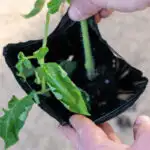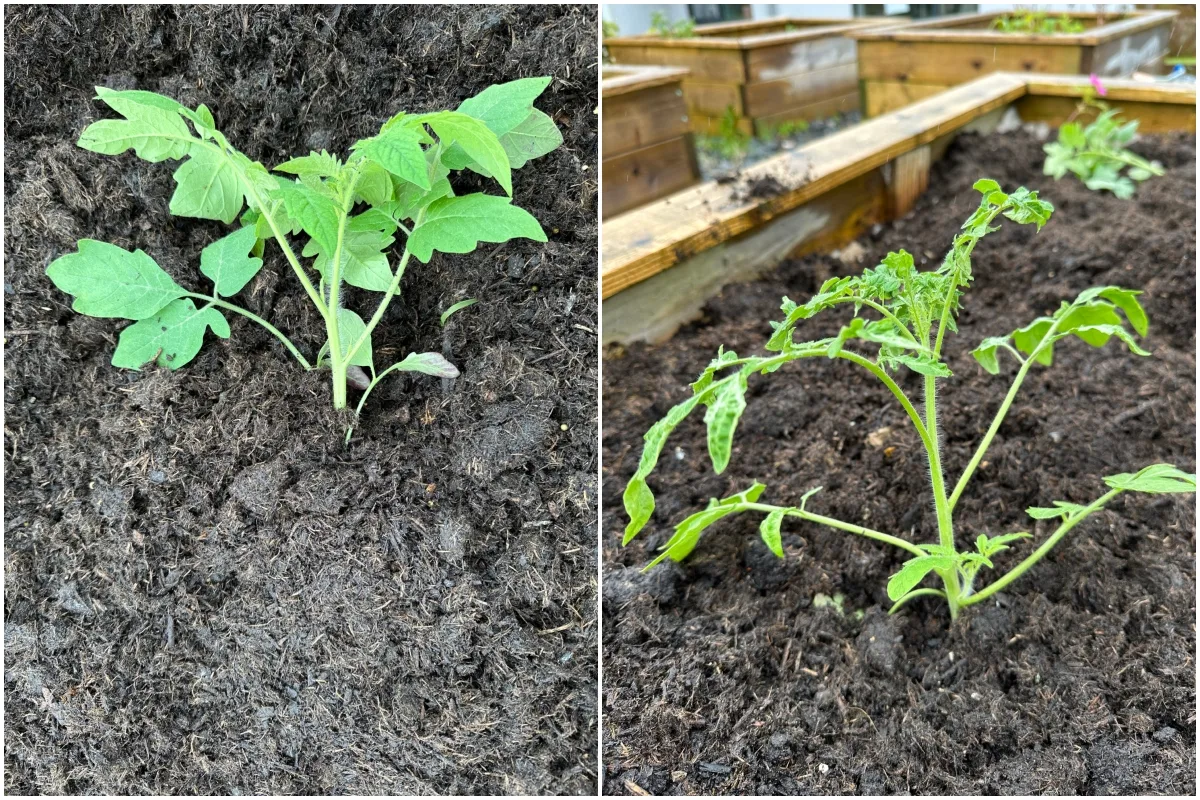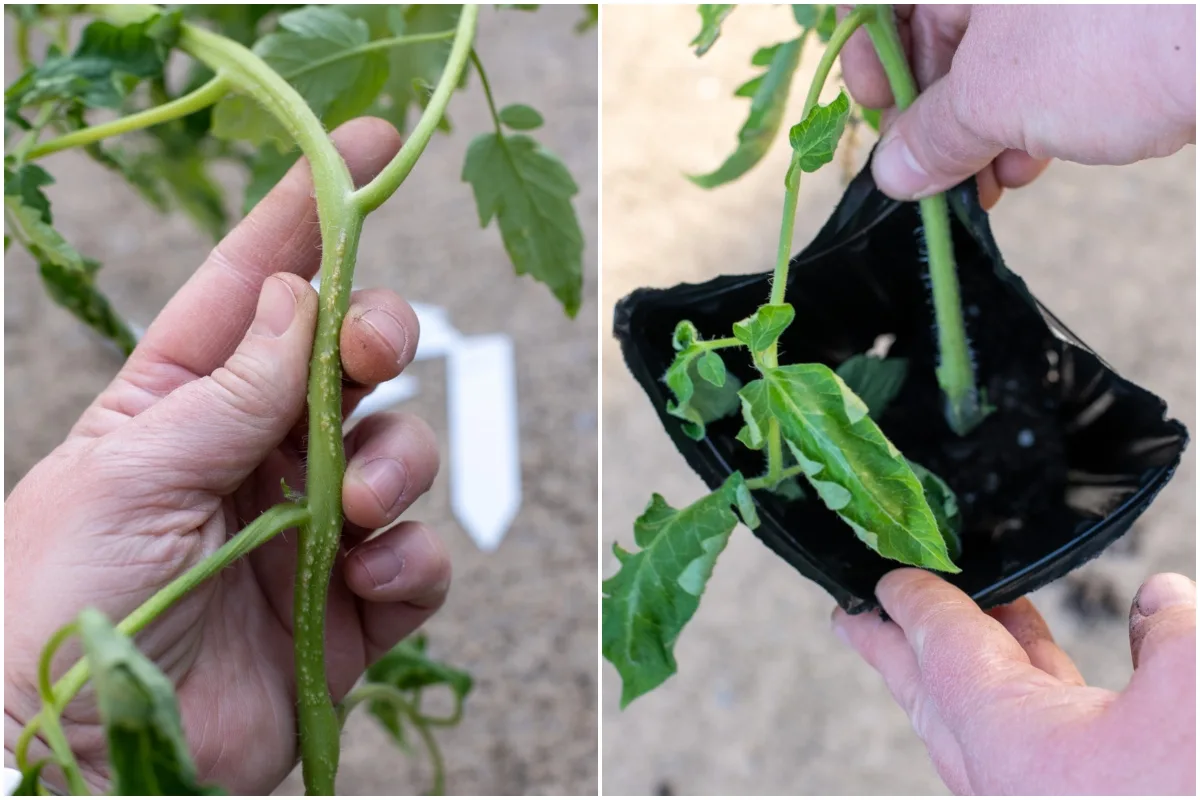
Wise tomato growers know the best way to plant tomatoes is sideways, by trenching them or burying almost the entire plant.
But what if I told you there’s something you can do even before you get to that point that will give your tomato seedlings a massive boost in productivity for the whole growing season?
Plus, if you’re one of those smart gardeners who already plant tomatoes sideways, my trick enhances the benefits of trenching and burying tomatoes deeply.
By combining both methods, you could grow nearly drought-proof plants that produce massive tomatoes by the bushel.
Are you in?
I thought so.
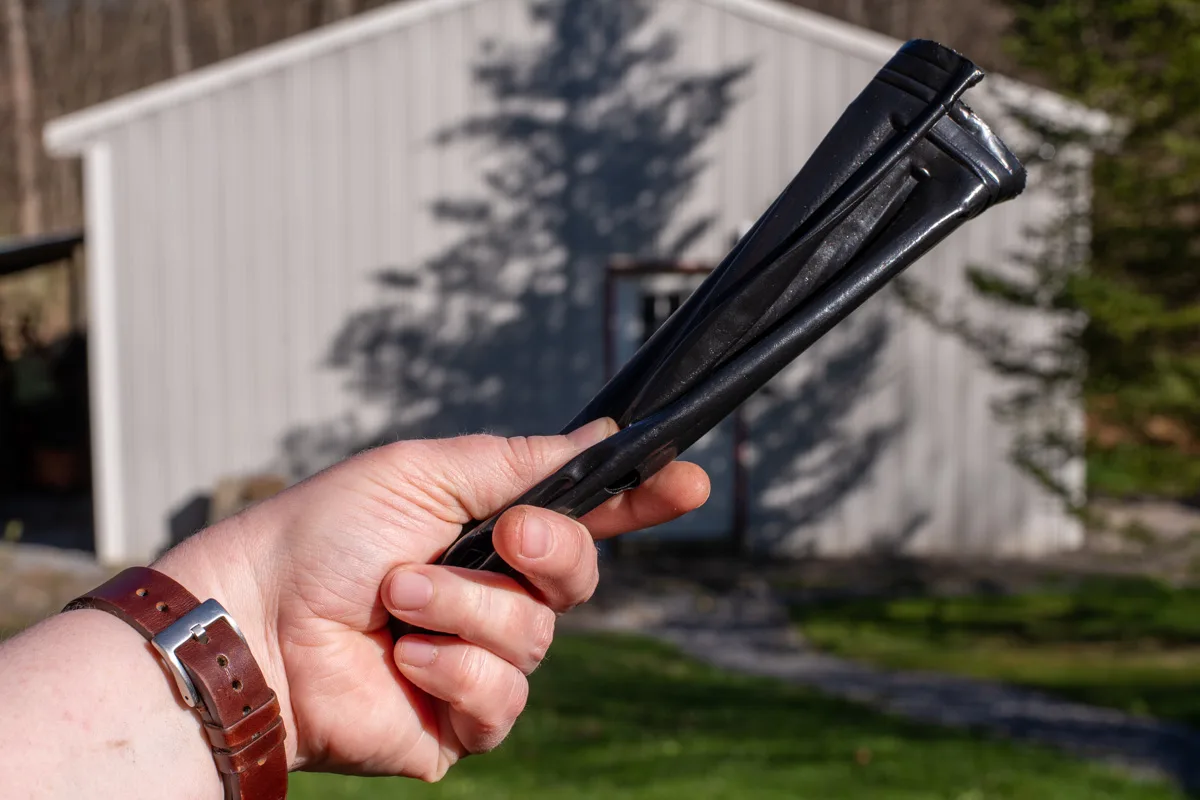
Well Now, Isn’t That Interesting?
I often tease tomato gardeners about being a special breed of crazy, but it’s only because I’m part of that mania, too. I know all too well the fevered madness tomatoes elicit each growing season. The first time we brush our hands across a tomato leaf, the trichomes must release some sort of metabolite that goes straight to our heads. There’s something about tomatoes that makes us lose our minds a little as we try to bend these plants to our will every summer.
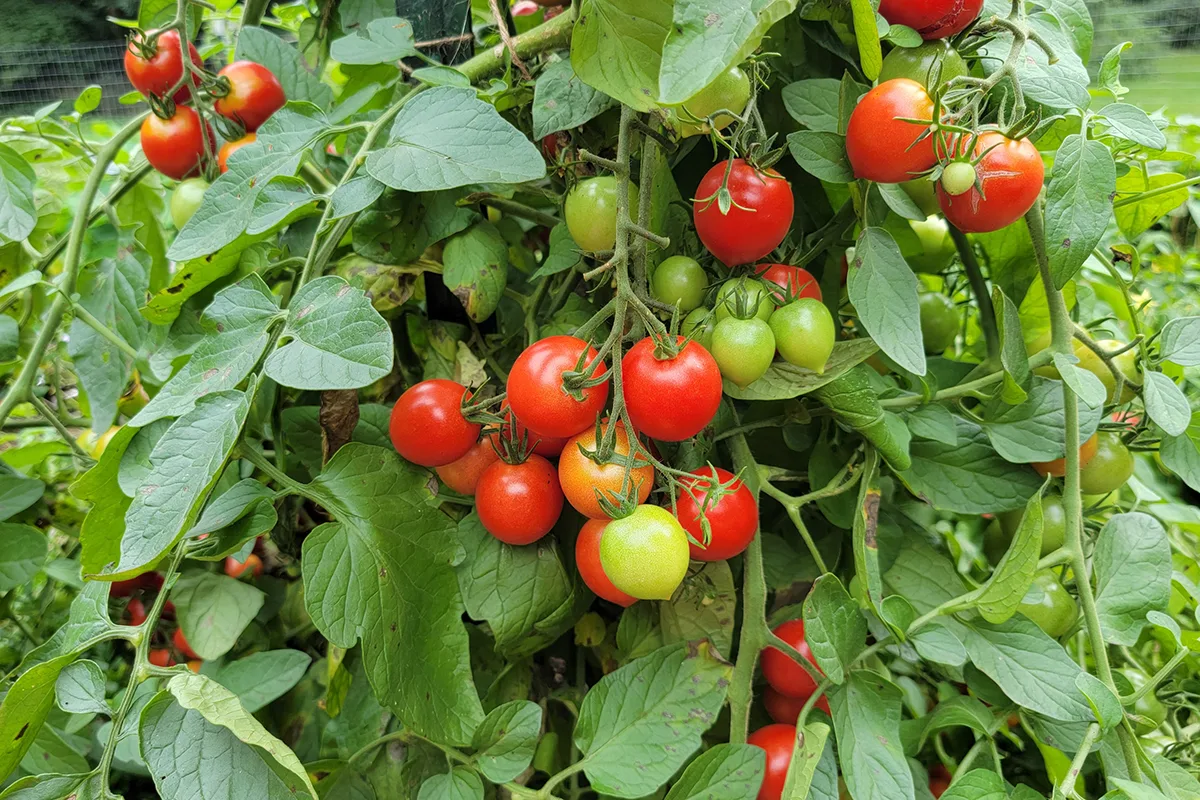
And once you’ve got tomatoes on the brain, you’re always looking for ways to grow them earlier, faster, tougher, bigger, tastier and more abundant.
I’m with you, Trace; keep talking!
So, when I bought some tree rooting pots for my American beautyberry cuttings, a little tomato-shaped light bulb went off in my brain.
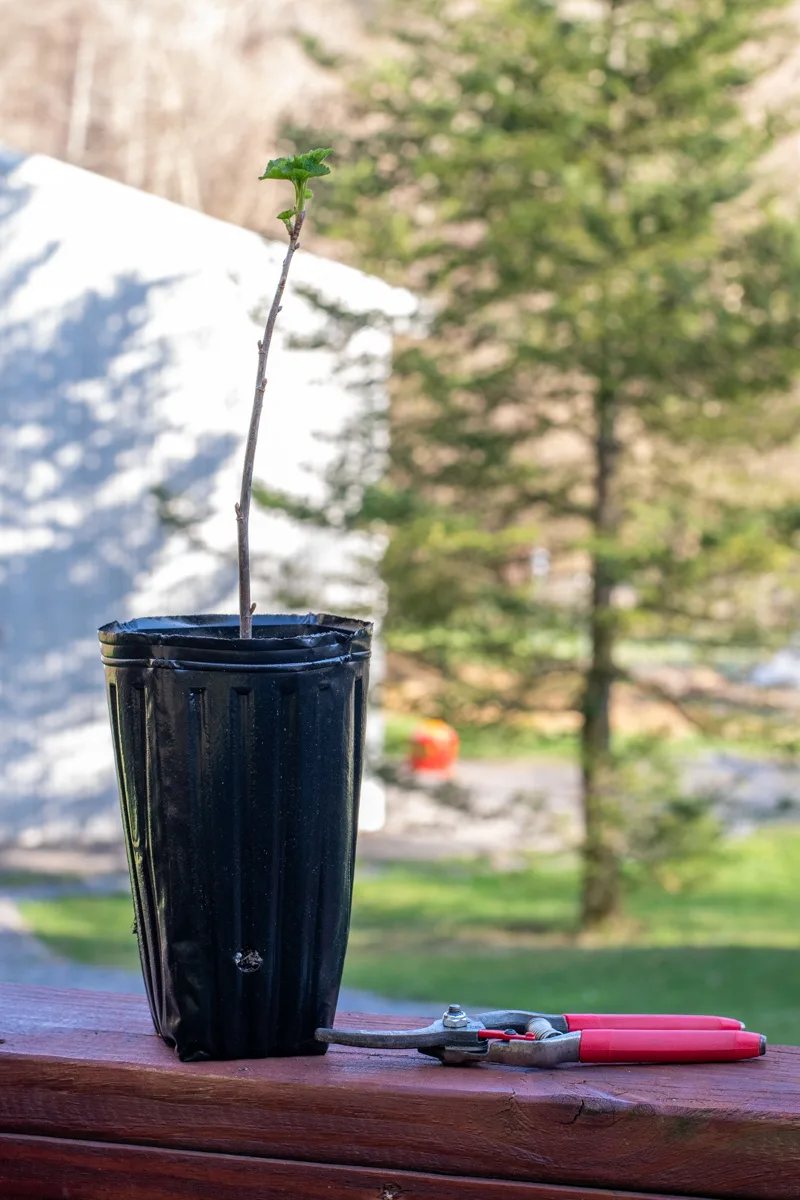
Okay, tell me more.
I got looking at these tall, squishy tree pots and then at my tomato seedlings and realized these are the perfect pots to take advantage of root primordia way before those plants ever see the garden.
Yeah! Alrig…I’m sorry, Tracey, root what?
I’ll explain. It all comes back to planting tomatoes sideway.
Why On Earth Do We Plant Tomatoes Sideways?
Have you ever noticed tiny yellow-green bumps growing along the stems of your tomatoes? That’s root primordia. It’s thousands of parenchyma cells dividing under the skin of the stem, ready to burst into action.
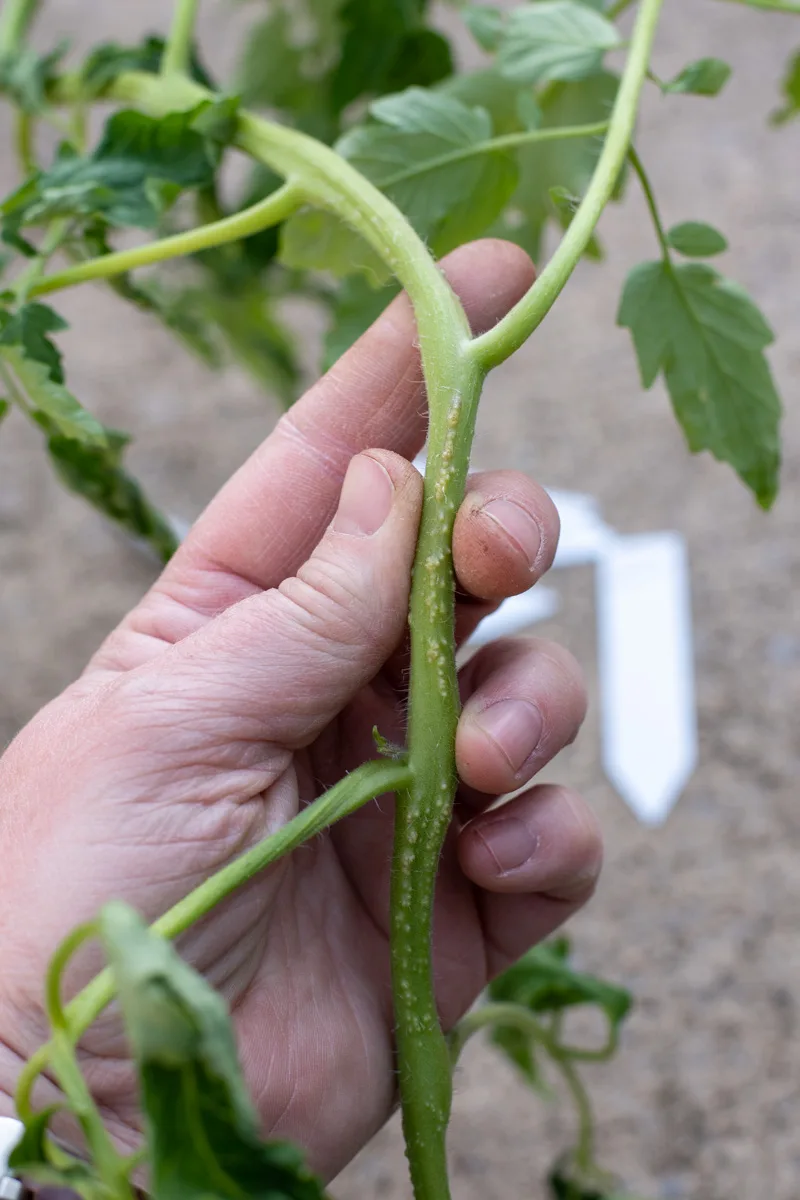
If you’ve read my piece about how to plant tomatoes sideways and why it works so well, then you know all about parenchyma cells, root primordia and adventitious root growth. But I’ll recap the general concept here.
Tomatoes were not meant to grow up.
Nope.
By design, tomatoes are intended to creep along the ground as the vining plants they are. And they still do where they grow wild in their native South America.
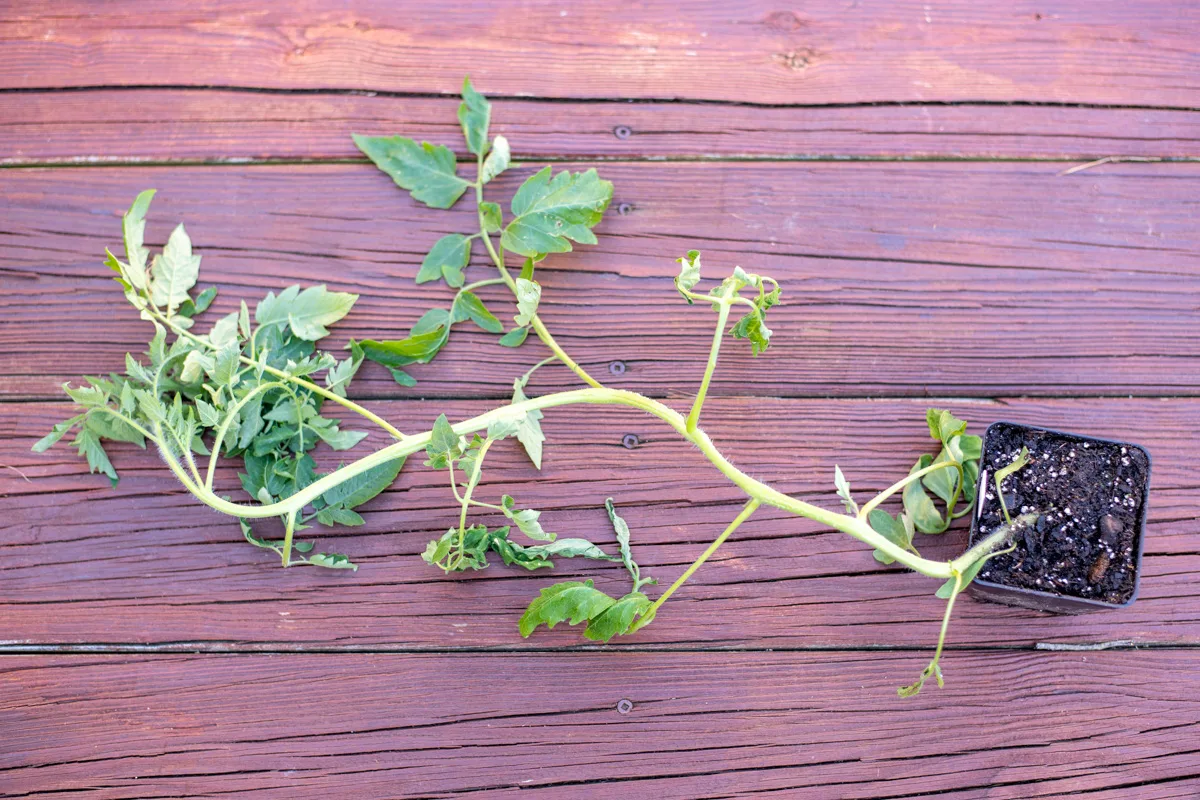
However, as we’ve selectively bred tomatoes over thousands of years, the resulting cultivated plants are less hardy and disease resistant, which means we have to grow our tomatoes off the ground. Otherwise, they would be plagued with soil-borne diseases and pests.
This is saying a lot considering how many tomato diseases and pests we deal with each season.
As they grow along the ground, new roots develop wherever the stem touches the soil. Tomatoes have special cells located just under the dermal layer of the stem called parenchyma cells. They are a tomato’s secret weapon for survival no matter where they grow.
Parenchyma cells are there creating structure and support, waiting to assist.
Did you accidentally nick a tomato stem with your trowel? Parenchyma cells start dividing to heal and scab over the wound.
Is your tomato stressed by drought? No problem; parenchyma cells will start dividing to grow lots of tiny new aerial roots along the stem and take in water from the air. This also happens wherever the stem touches the ground, and the roots will grow into the soil.
This process is called adventitious root growth, and it’s why you can bury a tomato plant on its side or so deeply that most of the plant is below ground.
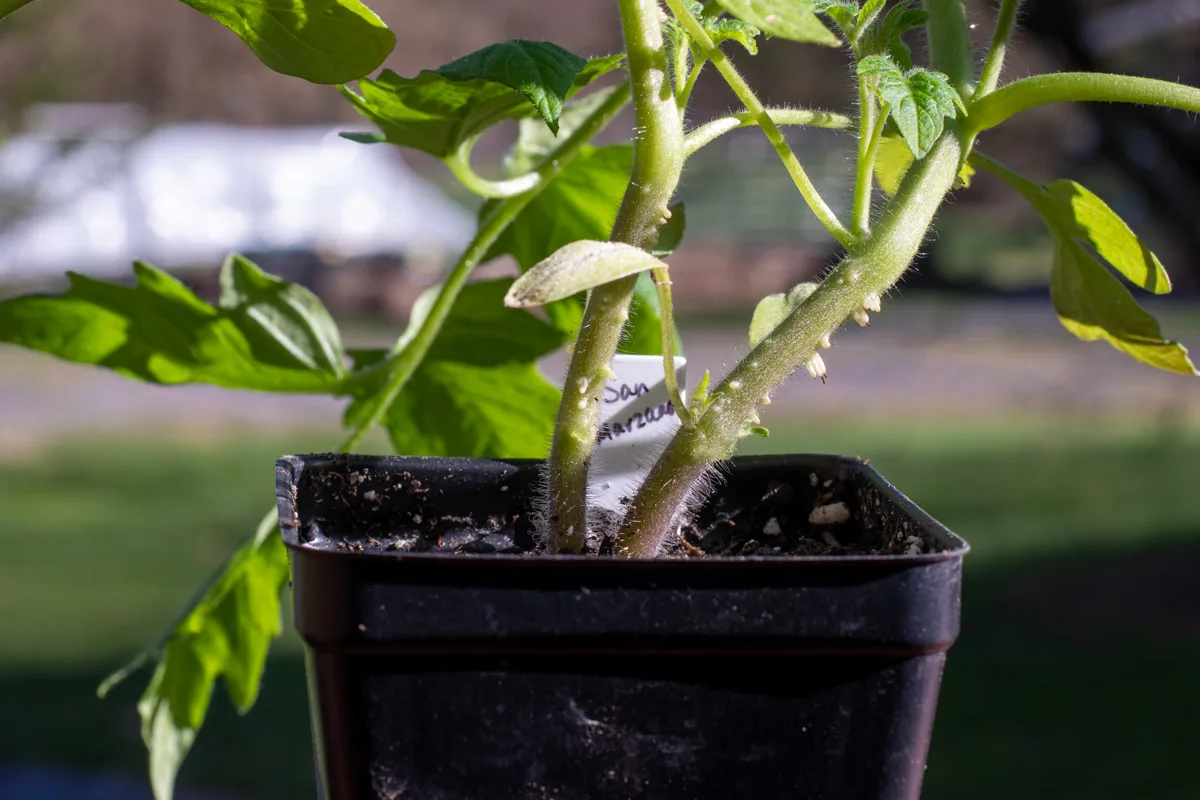
The parenchyma cells will start putting out new roots along the buried stem.
Suddenly you’ve got a tomato plant with an absolutely massive root system. Again, wise gardeners know what’s below ground is the key to getting more above ground.
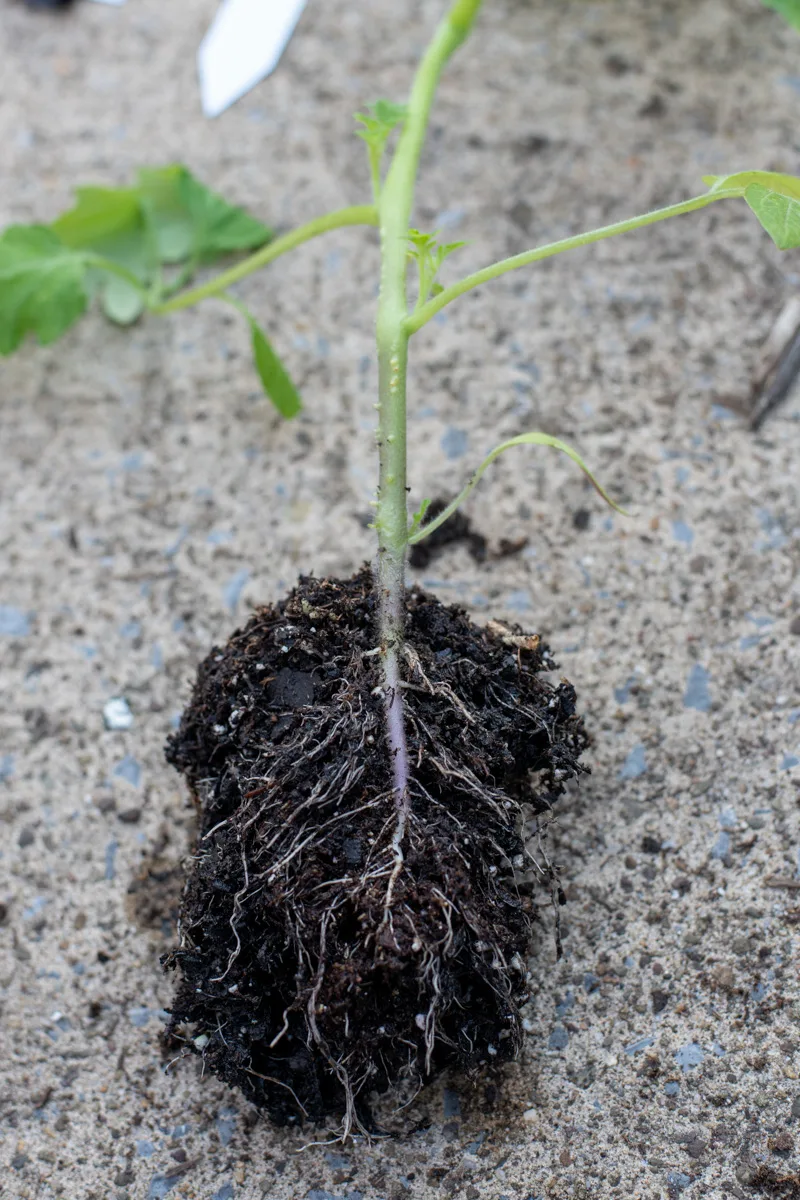
The larger the root system, the more access to water and nutrients the plant has, meaning you can grow monster tomato plants that put out pound after pound of tomatoes.
Now you’re starting to see the appeal of my goofy, oversized pots, aren’t you?
As I was planting my tree cuttings, I realized that if I took my little tomato seedlings out of their short 3″ tall pots and potted them up in the tree rooting pots, I could bury about 5” to 6” of the stem. And while I spend the next few weeks waiting for that final frost date to pass, my tomato seedlings will be busy putting out new root growth along the (now) buried stem.
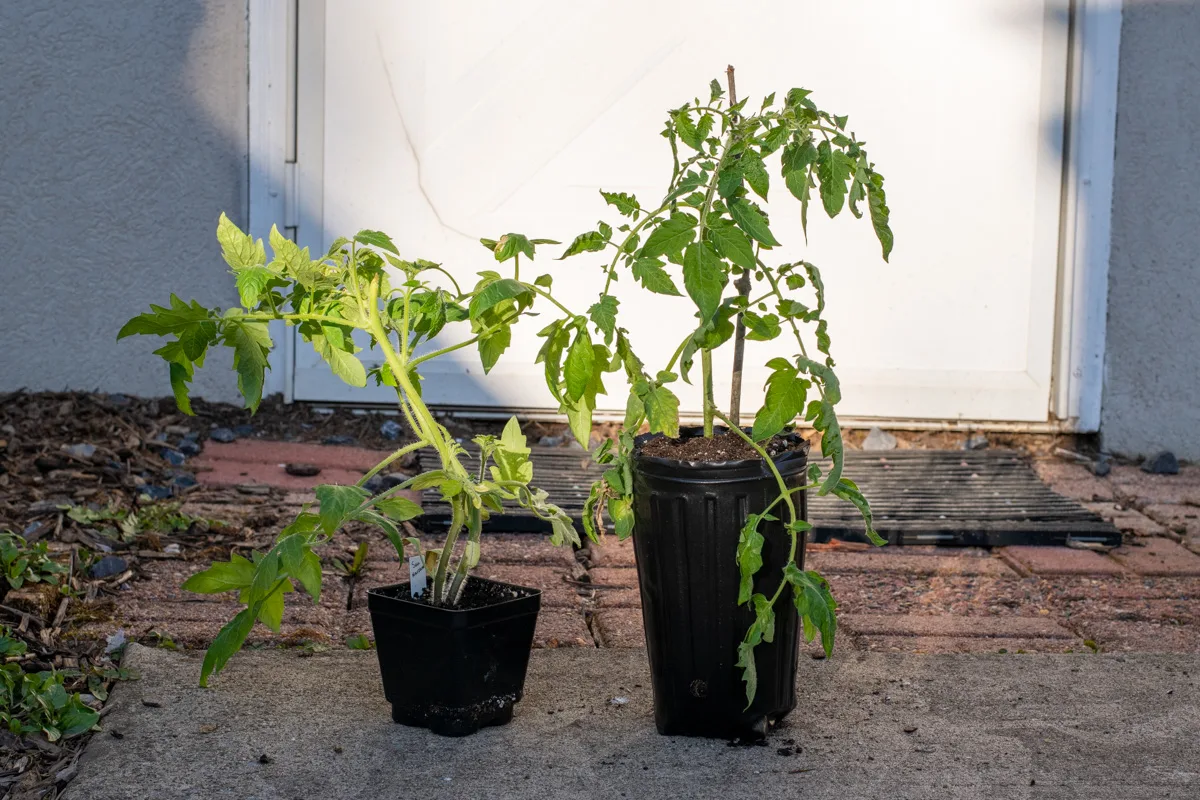
By the time I’m able to plant my seedlings in the garden, they will have new adventitious root growth all along the buried stem.
The Proof Is In The Pudding
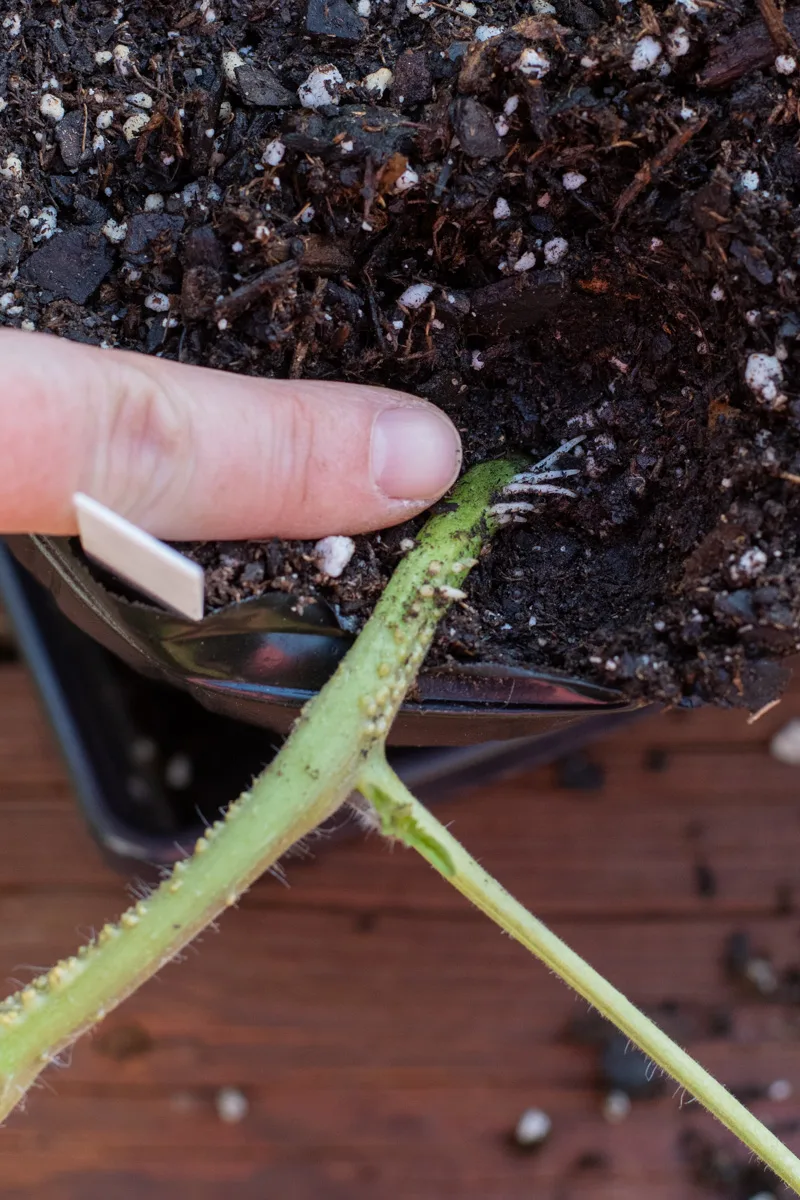
Catch Up Before You’re Behind
When you plant tomatoes sideways or deeply, there’s generally a period where growth above ground slows as the plant puts most of its energy into growing roots along the buried part. Eventually, the plant catches up, and growth takes off like a rocket thanks to the larger root system.
By “pre-burying” a portion of the stem now, the tomato seedlings will have less catching up to do when I trench them in a few weeks.
Not to mention, they will have a larger, healthier root system than trenching or burying deeply alone can accomplish. And the best part is, it doesn’t matter how you started your seedlings. Even if they’re spindly, leggy things, this will definitely help.
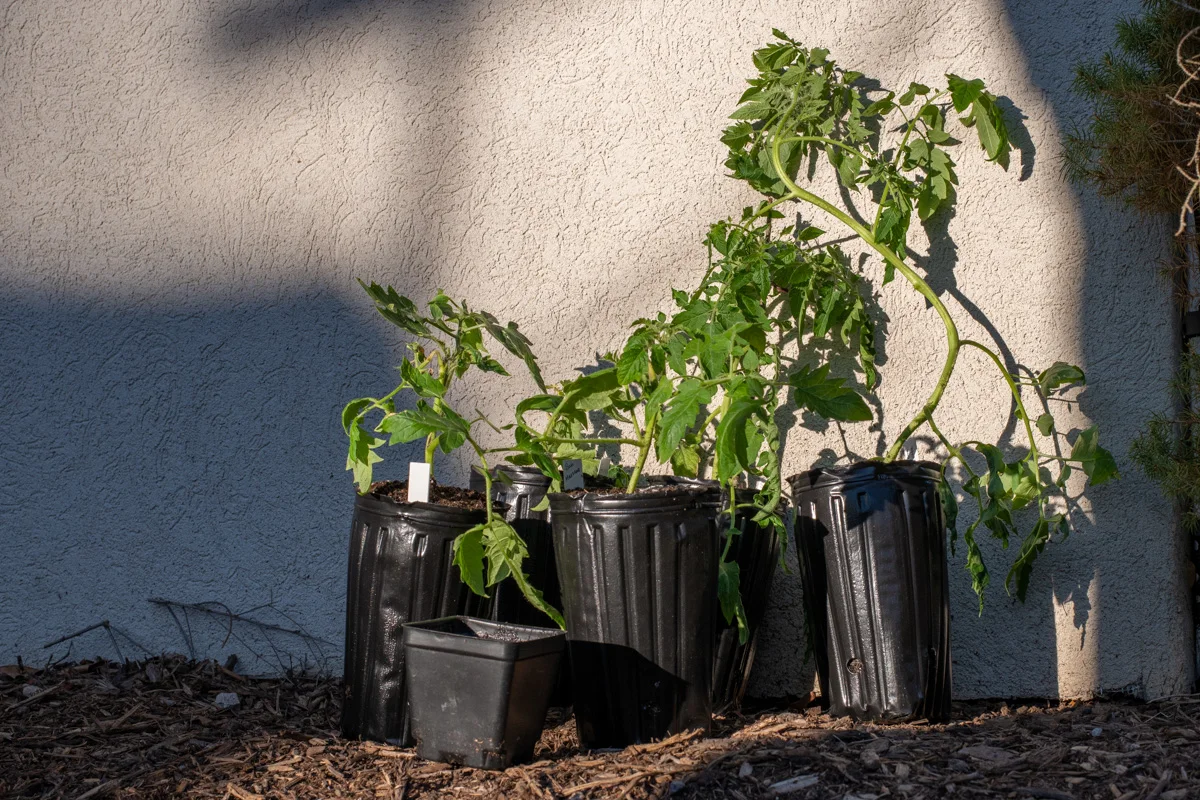
(My sweetheart gave me an odd look and slowly backed away while I was waving tree pots under his nose and explaining all of this to him. I’m sure I must have sounded like Doc trying to explain the space-time continuum.)
Go! Order some tall squishy tree pots. Heck, go crazy and order the 12″ ones; just get on this Monster Tomato Seedling Train!
Pre-Bury Tomato Seedlings to Stimulate Adventitious Root Growth
- To achieve the best results, we’re not going to add any soil to the bottom of the tree pots. We want to bury as much of the stem as we can.
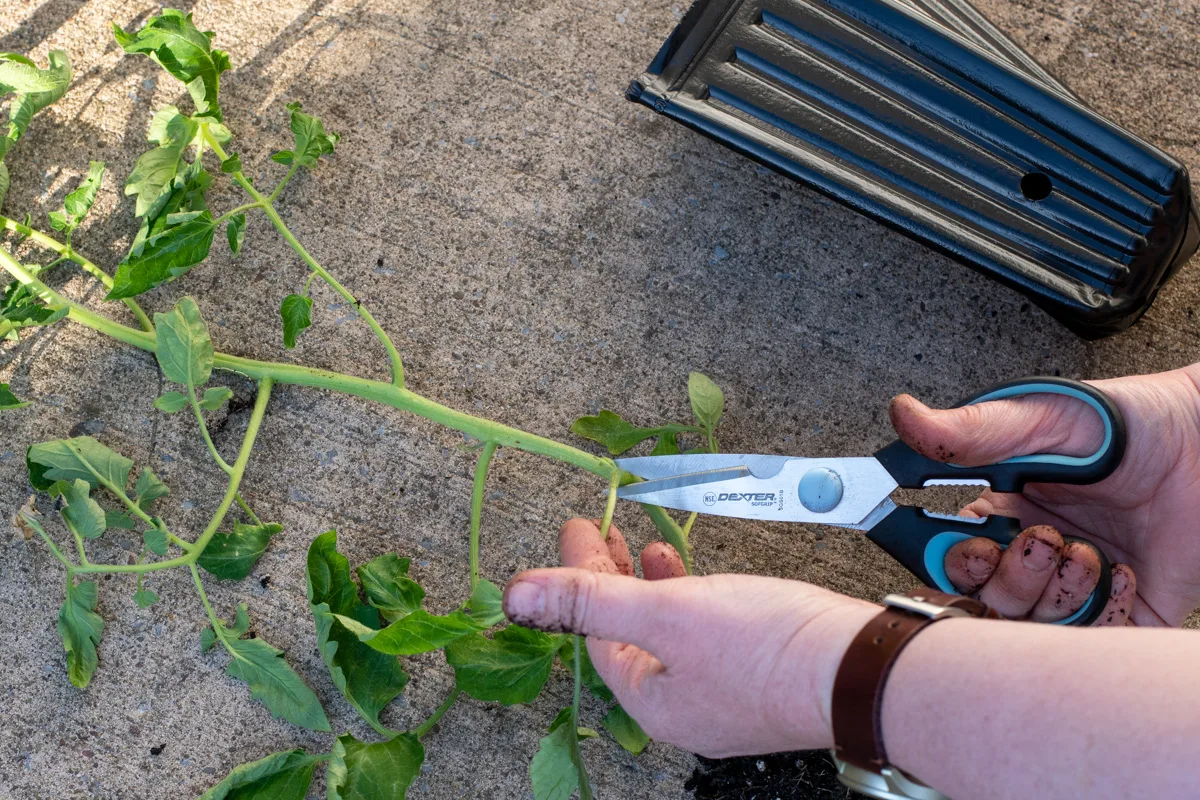
- Using sterilized scissors, trim off any stems that will end up buried in the taller pot. (New roots will grow from these spots too.)
- Gently squeeze the sides of the smaller pot until you can lift out the plant. I’ve found that watering first helps hold the potting soil together while you do this.
- Carefully slide the seedling down into the bottom of the tree pot. You want to make sure it’s sitting at the bottom with no gap.
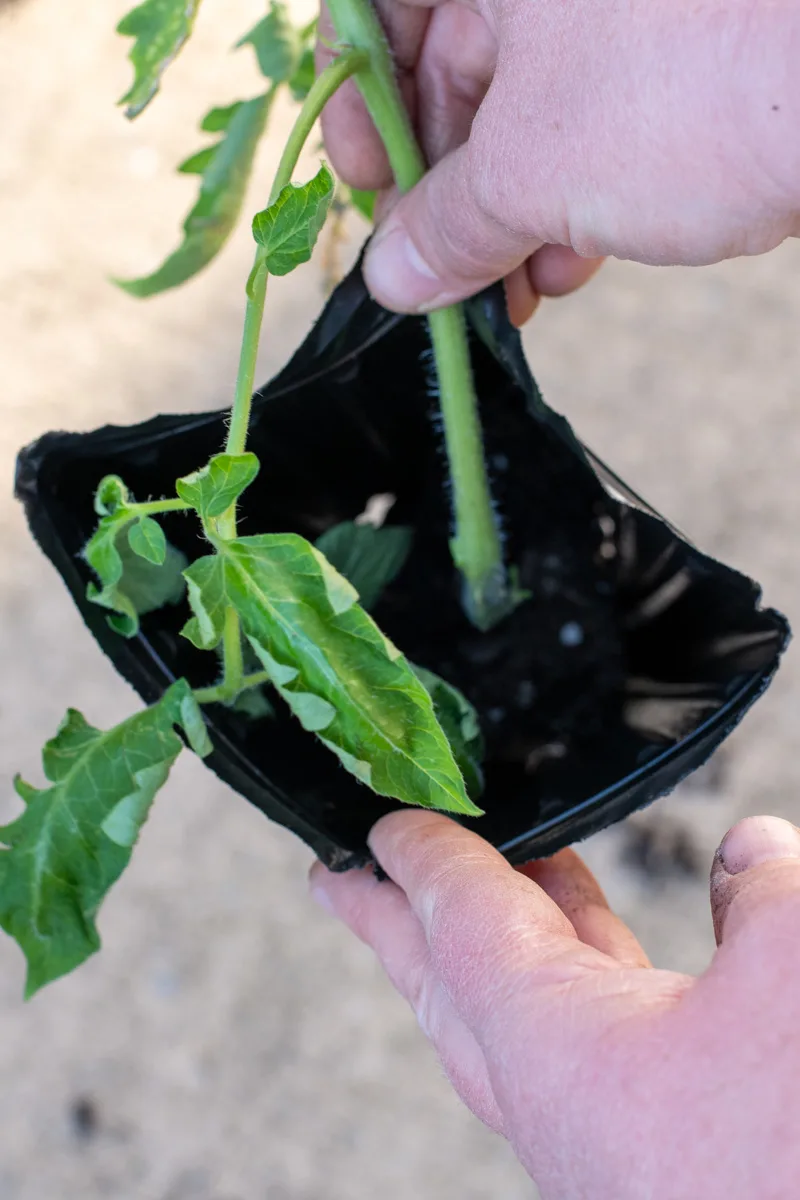
- As you hold the stem to keep it centered, begin adding potting soil. Press it firmly around the stem and root ball. Keep adding more soil, pressing firmly around the stem until you reach the top of the pot.
- Water the soil well, and top off with more potting soil if it settles a bit. You want to ensure all the newly added potting soil is moist, but not soaking wet. If you have it, I highly suggest inoculating with mycorrhizae when you water in the transplant. These beneficial fungi will increase the root system even further.
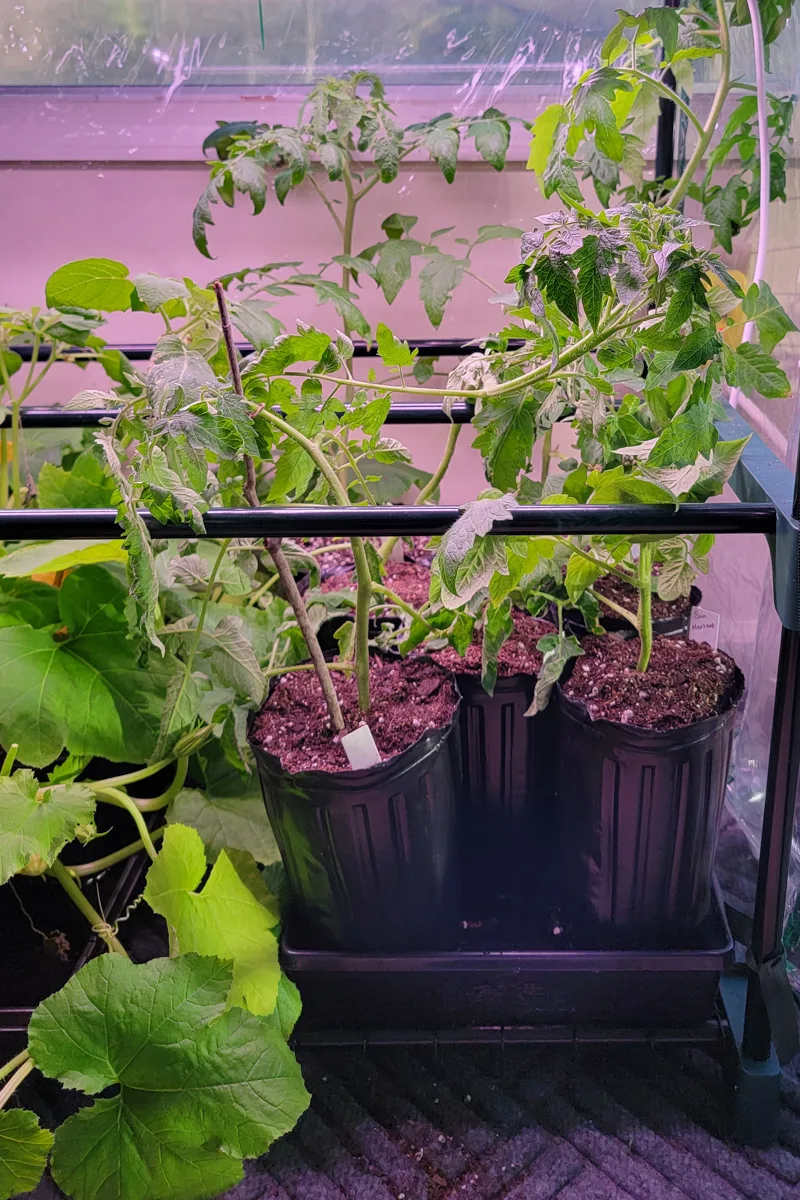
- Continue watering from the top of the pot for the first week to stimulate root growth. After that, place the pot in a tray and water from below. Allowing the plant to draw water up through the drainage holes will encourage the new roots to grow down where the water is.
When it’s time to plant your mega-seedlings, don’t forget to bury them deeply or on their sides (more on that at the article linked below), covering even more of the stem.
Not bad for a crazy tomato gardener, right?
Read Next:

Get the famous Rural Sprout newsletter delivered to your inbox.
Including Sunday ramblings from our editor, Tracey, as well as “What’s Up Wednesday” our roundup of what’s in season and new article updates and alerts.


